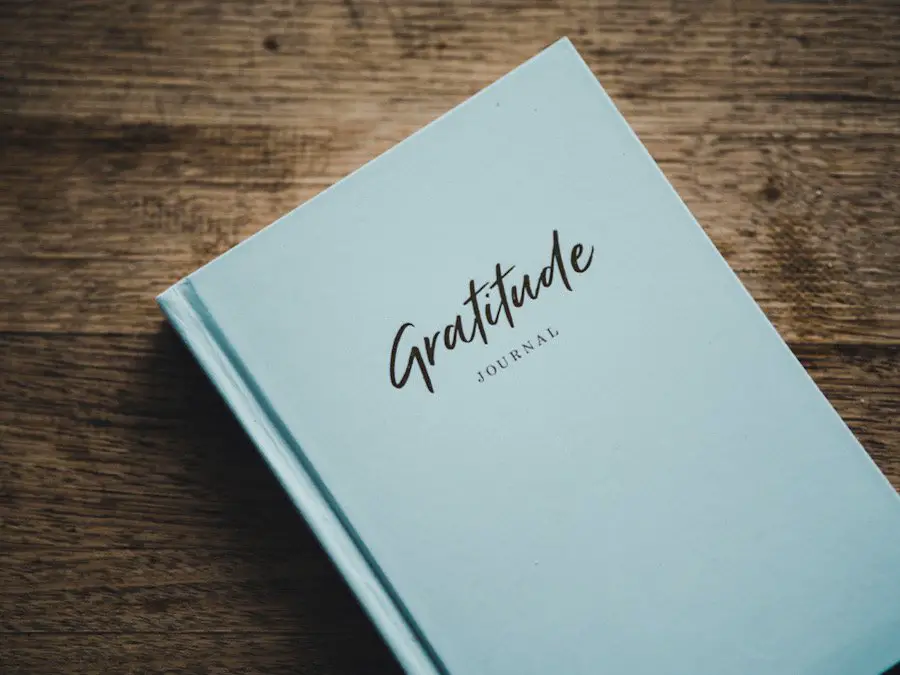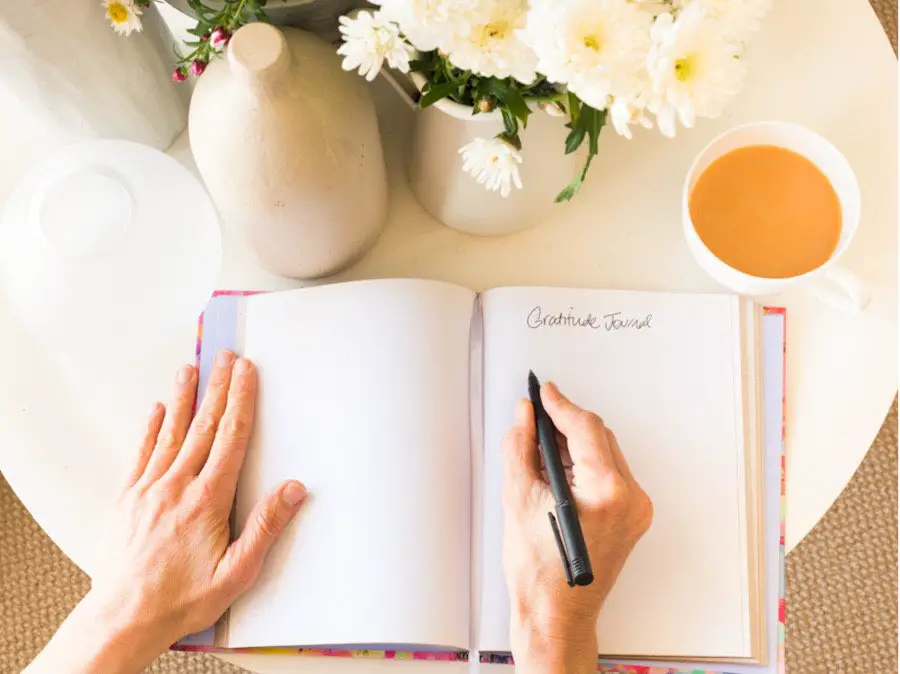You’ve likely heard of gratitude journals. They get mentioned on social media quite a bit. But are people actually spending the time to do this? What does it involve? And do gratitude journals work really?
Studies have discovered numerous benefits of gratitude journals, including an increase in optimism, decreased stress levels, and improved sleep habits. In general, studies have found that gratitude journals work to create a greater sense of gratitude in day-to-day living.
Gratitude journals are short lists people write regularly that recount their blessings. This may include things they’re grateful for unique to that day or in their entire lives.
Let’s take a deeper dive into what all this means by breaking down the practical details of what people do, what studies have found to be the benefits, and how you might incorporate this into your own life in the easiest way possible.
Table of Contents
What a Gratitude Journal Practice Is
While everyone may do this slightly differently, the idea is generally the same.
A gratitude journal is where you write down things you’re grateful for. This is typically done in a list format.
One of the most common ways people keep a gratitude journal is by writing one to three things they are grateful for every day. It’s recommended that you take five to ten minutes to do this.
Some people prefer starting their days this way, while others prefer ending the day with a gratitude list. I have a whole article on what the best time for gratitude journaling is. Whatever time of day you decide to do this, it’s generally a good idea to stick with that time. You can change it if it’s not working with you, but the key is consistency.
You can do this in a blank paper journal or by purchasing a paper journal with a format where they ask you what you’re grateful for and provide three blank lines. You can also do this digitally on the notes app on your phone, a Google Doc, or through a gratitude app on your phone. Some popular apps for this include Gratitude, 365 Gratitude, and the Day One Journal. If you are interested in the paper journal vs. digital journal debate, check out my article ‘Journaling: Computer Vs. Paper – Pros and Cons and How to Decide.’
Do Gratitude Journals Work?

Well, to start to answer that question, we have to define what our goals are. What do we want to see happen when we use a gratitude journal? What would “working” look like?
Looking at a gratitude journal from the outside, before starting one, it would seem like a good way to practice counting one’s blessings. By focusing more on the gifts in your day to day life, you should feel more grateful for what you have and more content.
The Dalai Lama is someone who talks about being grateful a fair amount. On this, he has suggested practicing gratefulness is essential to becoming happy. He said, “In order to be happy we must first possess inner contentment; and inner contentment doesn’t come from having all we want; but rather from wanting and appreciating being grateful for all we have.”
So do people really report becoming happier when they start a gratitude journal? Well, yes, actually.
There have been a lot of studies to support this. In one particular study, they worked with children age eight to eleven. They found teaching lessons in gratitude changed the way the children thought over time. In the long term, these kids were more appreciative and felt more positive emotions overall than their classmates who weren’t part of the lessons. Five months in, the differences between the two groups were stark.
Let’s look at some more studies. Researchers have found that generally, women practice gratefulness more than men. They’ve found that many of us have to do something like keep a gratitude journal to have grateful thoughts. If we aren’t mindfully doing an activity that practices gratefulness, it floats away. Instead of counting our blessings, we become more focused on our burdens.
A famous case study known as Blessings vs Burdens focused just on the effects of thinking about our gratitude when compared to focusing on stress. The researchers asked one group to keep a gratitude journal. In this study, they only had to write an entry once a week. The other group wrote down both neutral life events and the things causing them stress. The people who kept gratitude journals did things like exercise more regularly and reported feeling happier in their lives. When faced with the week ahead, the gratitude journalers were optimistic. The group writing down their burdens were less happy and more burdened by their lives.
Benefits of Keeping a Gratitude Journal

We’ve covered that gratitude journals generally make you happier. However, there are more specific benefits to doing this. Some of them you might guess and others are more surprising.
1. It Makes You More Optimistic
This makes sense and was seen in some of the studies mentioned above. The more you focus on the things you are grateful for in your life, the easier it is to believe more good things are coming. Even when things are tough and seem that they will be for a while, being more aware of your blessings makes it easier to see them and believe more will come.
2. It Helps You Be Less Materialistic
This one makes a lot of people uncomfortable. As many songs as we listen to that say materialism is okay, no one wants to think of themselves as materialistic. We associate it with being frivolous and shallow. However, we live in a physical world where materials are essential to having a good life. You need a nice pan to make dinner in. You need to wear clothes to participate in society. A lot of products we purchase benefit our lives greatly.
The problem comes in when all we want is more stuff. When nothing we have is good enough and none of it actually makes us any happier. When we have to keep acquiring more and more. This can happen to anyone, especially when we’re a bit unhappy with our lives. It doesn’t define you, though, and you can pull it back in.
Even if you just have a hint of materialism creeping in, a gratitude journal has been shown to help people become more grateful for the materials in their lives. This makes them more thoughtful about their future purchases and feel less like they need more things to be happy.
3. It Improves Your Self Esteem
A study in 2014 found that athletes who practiced gratitude had an improved sense of self-esteem. By counting what you’re grateful for, you see more of what you’re accomplishing in your own life.
4. It Helps You Sleep Better
Participants in a recent study wrote a list of things they were grateful for each night before bed. After three weeks, they got longer and more refreshing sleep.
Why do we think this happened? Possibly because gratitude reduces stress and makes us happier. If we’re focusing on happy thoughts before sleep, this releases some tension, making sleep easier.
5. It Reduces Your Stress Levels
The more we focus on how wonderful our lives can be, the less our minds focus on the stress. The same events that cause our stress still exist. This isn’t a perfect cure. But stress is easier countered and dealt with the more our minds focus on what we’re grateful for. Of course, the list of benefits of reducing stress is a lot longer than this. That may be why so many people report gratitude journal benefits that go way beyond this list, but this is a solid place to start for what studies have proven so far.
Other Tactics For Practicing Gratitude
A gratitude journal may be enough for you. For others, as the gratitude journal makes them more aware of their lives, they want to expand their practice.
How do we do that? Let’s cover two additional tips you may want to take to heart.
Countering Hedonic Adaptation By Cutting Back
Hedonic adaptation is where we have a lot of something we enjoy and it becomes less special over time. For example, we get very excited about the new option at the coffee shop and start ordering it every day. After a few months, it is no longer something we get excited about. Now it’s just a part of our daily habits and we barely notice it’s happening. This is hedonic adaptation in action.
In order to better savor that coffee and turn it into a special treat, you only order your favorite coffee on Thursdays. You have it every week, and you savor it each time. You get the chance to look forward to it as the week goes by. This isn’t about denying yourself something you love, it’s about appreciating it more when you have it.
This is a great practice as long as you’re mindful of it. Don’t deny yourself things you love. Use this carefully with things you can make more special by having them less often.
Write a Monthly Gratitude Letter

One way to expand your gratefulness practice and improve the relationships in your life is to write a monthly gratitude letter. This is a great year-long resolution that you can put on your calendar for one day every month.
This letter doesn’t have to be long. It could be a short card you send in the mail. You also have the option of writing a longer letter if that’s what feels right to you. This is your practice, after all.
Think of a time in your life when someone you care for did something you’re truly grateful for. Try to remember something that just made your day or your life better. This can be something big and life-changing, but most often it’s not going to be. It may even be an action you notice regularly in your life as opposed to one specific event.
For example, you may be grateful that your best friend is always the one to email you first to check on you. You may be grateful that your sister reminds you about your mom’s birthday every year.
Whatever comes to mind, the important part is that it’s authentic. This will get easier the more you practice gratefulness. The more journal entries you write, and the more letters, the faster examples from your own life will come to mind.
It’s normal to be stuck on how to word your letter. You can start off by saying that you were thinking about things you were grateful for in your life. You can then tell them that you wanted to make sure they knew that this thing they did/do is something you think about when counting your blessings. You can then add in any details about what this action means to you and how you feel when you think about it. One way to end the letter may be to say that you’re grateful to know them and have them in your life.
Bringing a Gratitude Practice Into Your Life

It’s hard to imagine someone who couldn’t benefit from bringing a little more gratitude into their days. As we go through our daily lives, the focus is typically on problem-solving. We face one issue after another, we tackle them, and then before we know it, the day is gone.
Even on our worst days, there are things to be grateful for. When those things seem more basic, the gratitude can sometimes be all the stronger. We’re grateful for our health, we’re grateful for this meal, and we remember how lucky we are to have those things in our lives. Our problems often feel smaller when we remember how good life can be in even the smallest things.
While we all want to be more grateful, forcing ourselves to think through our blessings every second of the day is too overwhelming. By starting a gratitude journal, you set aside five minutes every day to focus on gratitude. As studies have shown, the effects shift our mindsets so that our thoughts throughout our whole days naturally become more optimistic and grateful, without having to force our thoughts in that direction as we’re facing the struggles of the day.
If you’re ready to start a gratefulness practice, don’t worry too much about the “how”. Do you like a paper journal? Grab a pen and paper. Do you like using your phone? An app? Google Docs? Open them up and put a blank document or link to the app on your desktop. Then, schedule a time every day where you can take five minutes. You are now set up to start a gratitude journal! You can adjust your routine as you go for what feels right, but this is all you need to get started.
If you are new to journaling and would like to have a solid start, go ahead and check out my article ‘Journaling for Beginners- A Complete Guide.’


